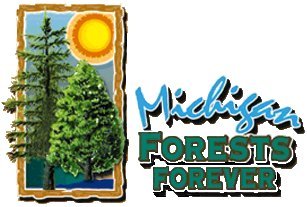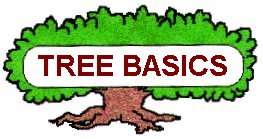

MICHIGAN FORESTS FOREVER TEACHERS GUIDE
| MICHIGAN'S FORESTRY EDUCATION |
 |
A Short
History of Early Forestry Education in Michigan
By Michael D. Moore
We have a great history of Forestry Education in Michigan! For many years we were the only state to offer undergraduate degrees at three separate institutions! Graduates of our three schools (Michigan Technological University, Michigan State University, and the University of Michigan) have held an extraordinary variety of positions in government, industry and academia over the last century. I will not be addressing the Forest Technician aspects to Forestry Education in Michigan in this article due to a lack of space….and knowledge. If there is a member who could document Forest Technician education history in Michigan I would be very happy to receive it, and perhaps have it published in this space in the future. In Lou Verme's book on Forestry Schools in Upper Michigan (discussed later) he gives a very good accounting of the Wyman School of the Woods, a ranger school in Munising from 1909 to 1917. A variety of two year programs have existed over the years at a number of institutions and should be recorded for the sake of history. On to early Forestry Education in Michigan.
In 1898, America's first forestry school began in George Vanderbilt's "Pisgah Forest" in the mountains of western North Carolina. The German Biltmore Estate Forester, Dr. Carl A. Schenck, founded the school. He had succeeded Gifford Pinchot as manager of the vast Biltmore Forest properties in 1895 and he started the school to satisfy the need to educate his apprentices. A little known fact is that after a major dispute with estate owner George Vanderbilt in 1909 Dr. Schenck took the Biltmore Forest School on the road. There were six different locations around the world that the school traveled to each year, including Michigan, with a headquarters at Cadillac on the Cummer-Diggins Lumber Company holdings. This continued until 1913.
Also in 1898 Cornell University started a forestry program (a victim of politics it disappeared in 1903), and Yale University's School of Forestry began in 1900. The Cornell program was headed by Dr. Bernhard Eduard Fernow and one of its three original instructors was Dr. Filibert Roth.
Much earlier, in 1875 Dr. William J. Beal of the Michigan Agricultural College at East Lansing made experimental planting of 150 different species of trees, and on the basis of this study wrote the first experiment station bulletin on forestry in 1886 entitled "Lessons on Growing Forest Trees." The increasing emphasis on forestry at MAC led to a change in 1880 of Dr. Beal's title to Professor of Botany and Forestry. He is generally regarded as the father of Michigan forestry.
According to the great early North American forester Dr. Fernow, the first course recognized as true forestry was given by Dr. Volney Morgan Spalding at the University of Michigan in 1881. It was titled "The Science of Forestry" and was a required course in political science! It continued for four years and is generally considered the course that set the tradition that something more had to be done about Forestry at Michigan.
The first formal course in forestry at MAC was listed in the college catalog in 1883. In 1888 Dr. Beal was appointed as a Director of the newly formed State Forestry Commission. He is generally considered one of the primary leaders in Michigan of this new profession of forestry.
The Departments of Forestry at the University of Michigan and Michigan Agricultural College (now MSU) were authorized in 1901. On March 5, 1903 the regents at Ann Arbor appointed Filibert Roth as Professor of Forestry who was then working in Washington D.C. for Gifford Pinchot as a manager of the National Forest Reserves. Interestingly Dr. Roth was also appointed in 1903 as Warden of the Michigan Forestry Commission. Bill Botti and I believe he can be considered the first State Forester for Michigan. In 1904 he wrote the "Michigan Forest Reserve Manual for the Information and Use of Forest Officers" a most interesting little book that includes forms for Timber Sales, Grazing Permits and Activity Reports….fifteen forms in all, numbered 1 to 15! Too bad Dr. Roth can't revisit the State Forestry operations today and view the plethora of forms available to the modern State Forest Manager! And the tremendous managed forests!
Professor E. E. Bogue was appointed professor of forestry at MAC in East Lansing in 1902. The year 1903 is generally accepted as the start of the professional curriculum in Forestry at both institutions. It is interesting to note that Harvard University, the University of Maine and the University of Minnesota also began their forestry education programs in 1903. Both MAC and UofM were national rather than local in character-they trained foresters for employment throughout the United States and their students came from all parts of the country.
Gifford Pinchot attended a Michigan Forestry Commission meeting in Grand Rapids in July, 1903 and, among other things, expressed concern over the existence of two forestry schools in Michigan - fearing they might waste valuable energy in competition with one another. His concerns were eased by the explanation that the two schools would divide responsibilities, with Michigan Agricultural college emphasizing farm forestry and the University of Michigan doing post-graduate work!
The Michigan College of Mining and Technology (now Michigan Technological University) organized a Department of Forestry in 1936 in keeping with the expanding curricula of the institution. Louis J. Verme has detailed the interesting beginnings to the Michigan Tech forestry school in his book, Forestry Schools in Upper Michigan Then and Now…., and its founder U. J. Noblet. After service as a WWI aerial gunner's mate U. J. received a degree in Forestry from Michigan Agricultural College. He then went to Houghton to coach hockey. In 1936 he left athletics to start the Department of Forestry. The forestry program at Michigan Tech has a rich history.
Over the years, many names of great importance to the profession are found on the faculty lists of the three schools….names like A. K. Chittenden, Stanley G. Fontana, Samuel T. Dana, Gene Hesterberg, T. D. Stevens, Paul A. Herbert, K. P. Davis, Stephen H. Spurr, Shirley W. Allen, Keith Arnold, Helmuth Steinhilb, Victor J. Rudolph, Larry Tombaugh, Eric Bourdo and Lee James, to mention a few. Roth, Davis, Spurr and Arnold all served as President of the SAF at one time in their careers and many faculty members such as James and Rudolph served on the ruling SAF Council.
There is a tremendous history in our three schools of forestry here in Michigan. Although the University of Michigan no longer grants an undergraduate degree in forestry the University is accredited by the Society of American Foresters for graduate study in forestry. How prophetic the explanation of why two schools were established in Michigan that was given to SAF's founder, Gifford Pinchot was in 1903! What a tremendous contribution to the science and practice of forestry in the United States (and the world) have the thousands of graduates of our three institutions made since 1903! Graduates of our schools have formed the heart and soul of our many government agencies, forest industries (large and small), forestry associations, consulting firms and our institutions of higher learning. Yes, many of the graduates have occupied prominent positions in our profession, and continue to do so.
For those interested in
more information, may I suggest a copy of Louis J. Verme's book, "Forestry
Schools in Upper Michigan Then and Now" … available from the author for $2.00.
He can be reached at Louis J. Verme, E9566 Route 1, Munising, MI 49862 Phone
906-387-3235.
 |
This website was developed and created by Michigan State University Extension for the teachers of the State of Michigan. |